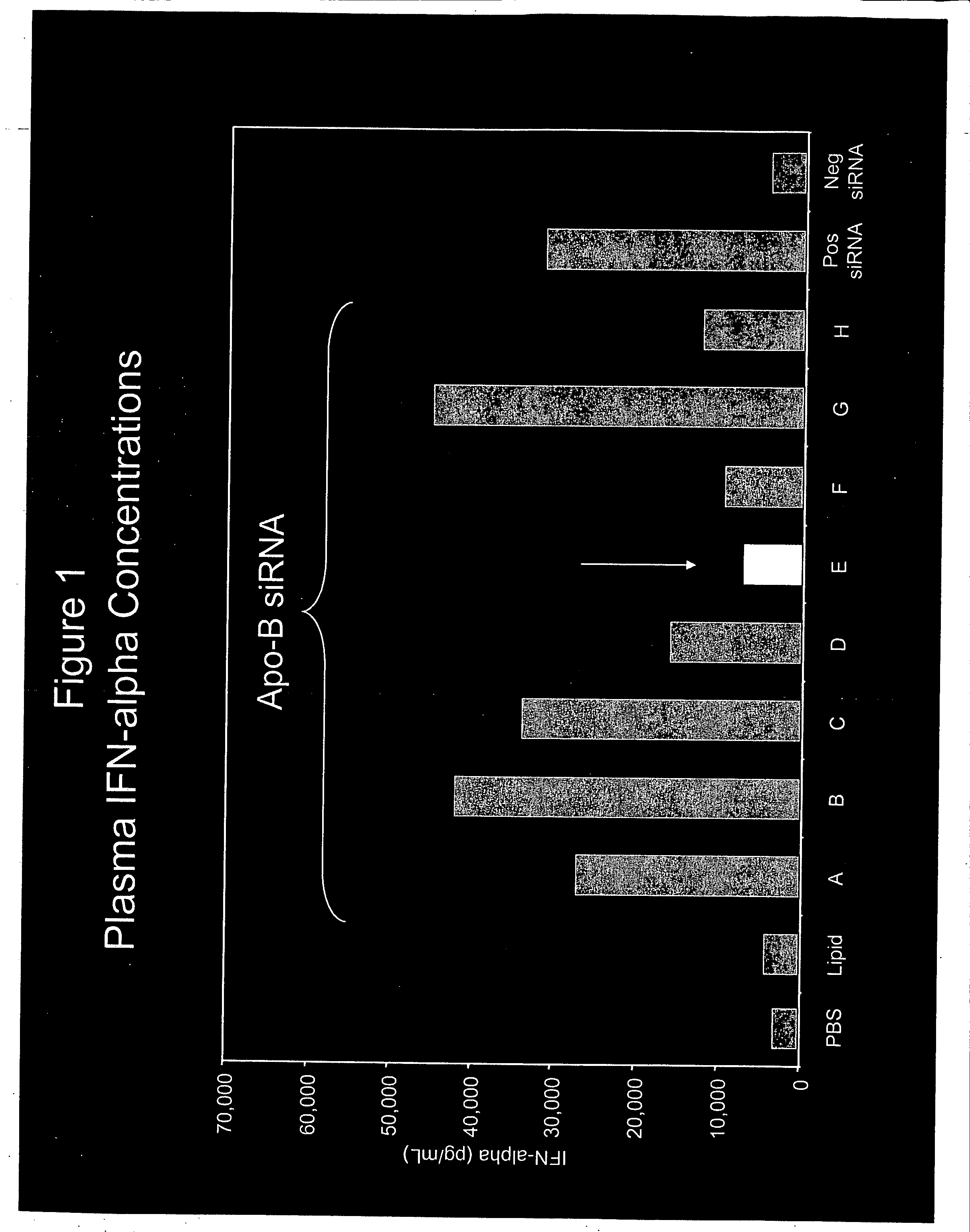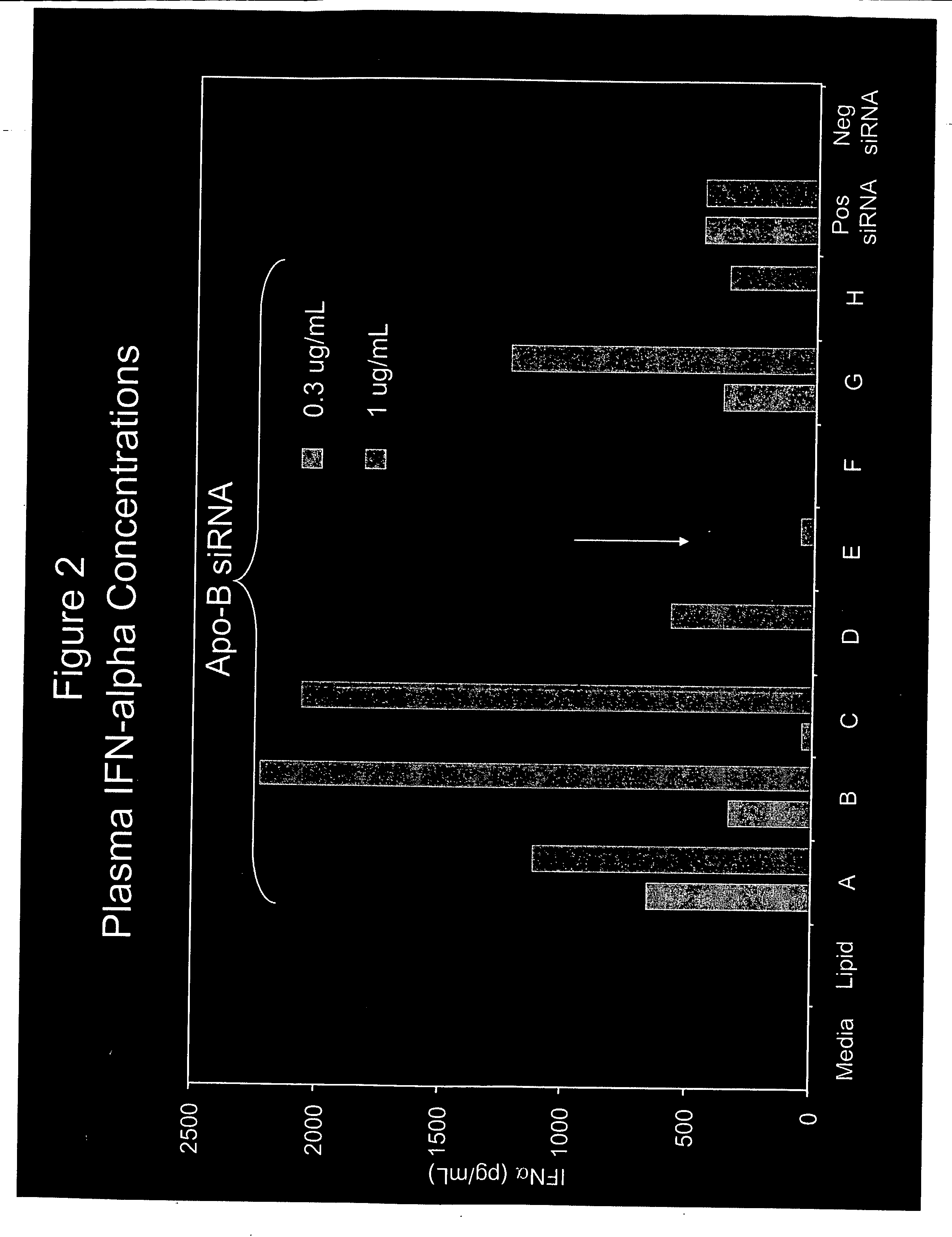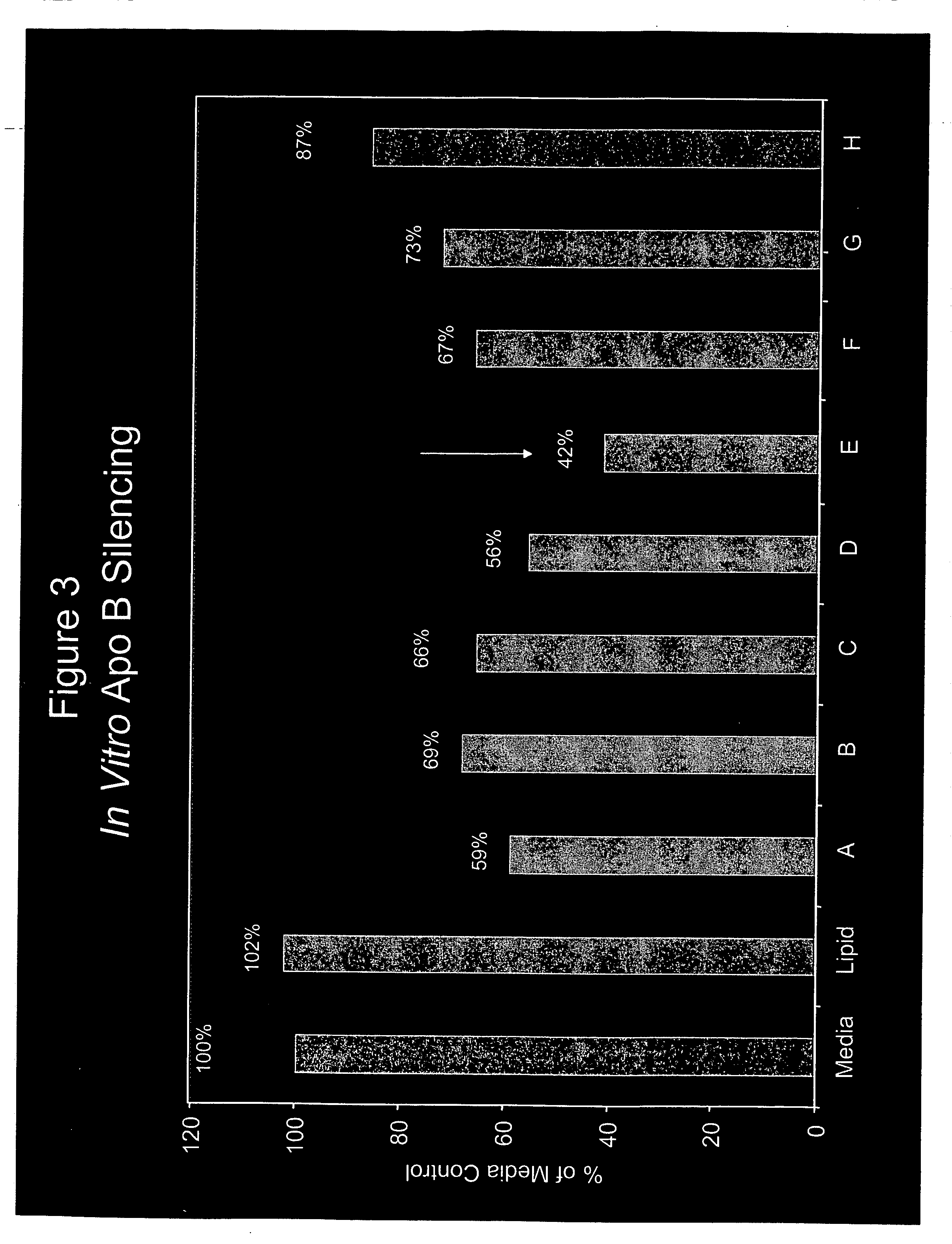siRNA silencing of apolipoprotein B
a technology of apolipoprotein and silencing method, which is applied in the field of silencing sirna apolipoprotein b, can solve the problem that none of the compositions or methods described can specifically modulate serum cholesterol on a long-term basis, and achieve the effect of lowering serum cholesterol levels
- Summary
- Abstract
- Description
- Claims
- Application Information
AI Technical Summary
Benefits of technology
Problems solved by technology
Method used
Image
Examples
example 1
Selection of Candidate ApoB siRNA
[0277] Candidate Apolipoprotein B sequences were identified by scanning and Apolipoprotein sequence to identify AA dinucleotide motifs and the 19 nucleotides 3′ of the motif. The following candidate sequences were eliminated: (1) sequences comprising a stretch of 4 or more of the same base in a row; (2) sequences comprising homopolymers of Gs; (3) sequences comprising triple base motifs (GGG, CCC, AAA, or TTT); (4) sequences comprisig stretches of 7 or more G / Cs in a row; and (5) sequences comprising direct repeats of 4 or more bases resulting in internal fold-back structures.
[0278] Reynold's Rational Design criteria was then applied to the remaining candidate sequences to identify sequences with: [0279] 1. 30%-52% GC Content; [0280] 2. At least 3 A / Us at positions 15-19 (sense); [0281] 3. Absence of internal repeats; [0282] 4. A at position 19 (sense); [0283] 5. A at position 3 (sense); [0284] 6. U at position 10 (sense); [0285] 7. No G / C at posit...
example 2
Production of Type I Interferons and Inflammatory Cytokines Following Administration of SNALP Encapsulating siRNA Targeting ApoB
[0289] SNALP (30:2:20:48:DLinDMA:PEG-cDMA:DSPC:Chol) encapsulating siRNA targeting ApoB and having the sequences shown in Table 2 were administered to female Balb / C mice at 2.5 mg siRNA / kg.
TABLE 2siRNATarget SequenceIdentifierDesignation(5′-3′ sense strand)OverhangAApoB-148GAA GAU GCA ACU CGA UUC AdTdTBApoB-911ACA GUC GCU UCU UCA GUG AdTdTCApoB-1455UGA AUG CAC GGG CAA UGA AdTdTDApoB-3050CGG GAG AAG UGG AGC AGU AdTdTEApoB-3193AGA AGC AGG ACC UUA UCU AdTdTFApoB-3699GGA CAU GGG UUC CAA AUU AdTdTGApoB-5490GAA UGU GGG UGG CAA CUU UdTdTHApoB-6134UUA AUG GCU UAG AGG UAA AdTdT
[0290] Plasma IFN-α was measured 6 hours after administration of the SNALP using methods known in the art. The results are shown in FIG. 1.
example 3
Production of Type I Interferons and Inflammatory Cytokines Following Contact with SNALP Encapsulating siRNA Targeting ApoB
[0291] SNALP (30:2:20:48:DLinDMA:PEG-cDMA:DSPC:Chol) encapsulating siRNA targeting ApoB and having the sequences shown in Table 1 were incubated with naïve human PBMC. siRNA was present in the culture at either 0.3 μg / ml or 1.0 μg / ml. IFN-α in the culture media was measured after an overnight culture using methods known in the art. The results are shown in FIG. 2.
PUM
| Property | Measurement | Unit |
|---|---|---|
| Temperature | aaaaa | aaaaa |
| Diameter | aaaaa | aaaaa |
| Diameter | aaaaa | aaaaa |
Abstract
Description
Claims
Application Information
 Login to View More
Login to View More - R&D
- Intellectual Property
- Life Sciences
- Materials
- Tech Scout
- Unparalleled Data Quality
- Higher Quality Content
- 60% Fewer Hallucinations
Browse by: Latest US Patents, China's latest patents, Technical Efficacy Thesaurus, Application Domain, Technology Topic, Popular Technical Reports.
© 2025 PatSnap. All rights reserved.Legal|Privacy policy|Modern Slavery Act Transparency Statement|Sitemap|About US| Contact US: help@patsnap.com



